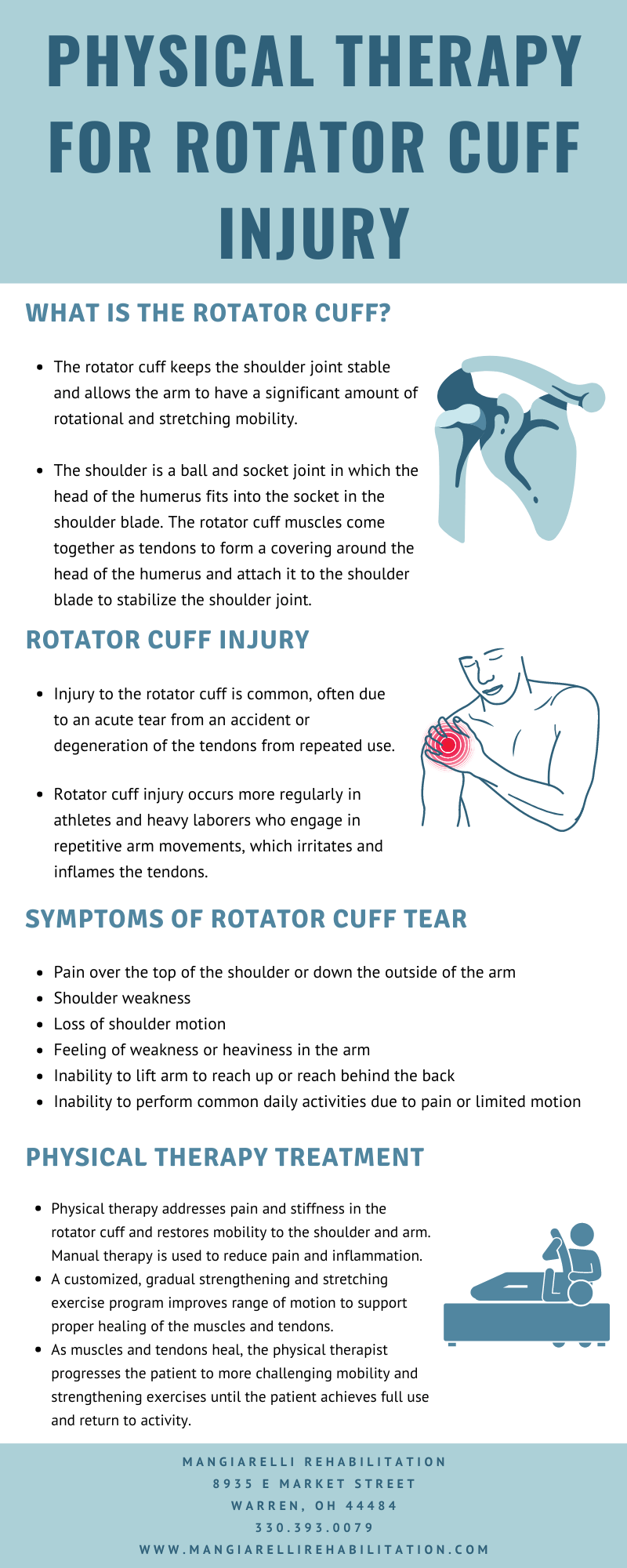Rotator Cuff Injury [Infographic]
The rotator cuff is a group of tendons that cover the head of the humerus, connecting the humerus to the shoulder blade and stabilizing the shoulder joint. The rotator cuff allows the shoulder and arm rotational and stretching mobility. Injury to the rotator cuff is very common, particularly among heavy laborers and athletes who engage in heavy lifting and repetitive arm movements, which can irritate and inflame the tendons.
Rotator cuff injuries include bursitis (inflammation of the bursa), tendinitis (inflammation of the muscles and tendons), and strains and tears of the tendons. A strain occurs when the tendons are overstretched, whereas a tear is either a partial or complete tear through the tendon. A rotator cuff tear can occur suddenly due to an accident or gradually due to overuse and age.
Symptoms of rotator cuff injury include pain over the top of the shoulder or down the outside of the arm, shoulder weakness, feeling of weakness or heaviness in the arm, loss of shoulder motion, inability to lift arm to reach up or reach behind the back, and inability to perform common daily activities due to pain or limited motion.
Physical therapy can address and treat pain related to rotator cuff injury and restore range of motion, strength, and coordination to the shoulder. Working with a physical therapist is essential to safely regain full use of the injured arm and rotator cuff, particularly should rotator cuff surgery be necessary.
Physical therapists assess the patient’s rotator cuff and injury using a series of tests to measure arm and shoulder range of motion and strength. The therapist uses manual therapy and modalities of ice and electrical stimulation to reduce pain and inflammation. Once pain has been managed, the therapist then progresses the patient to a gradual strengthening program to improve range of motion and function of the shoulder. The therapist strategically strengthens smaller muscles that are important to the shoulder’s movement to compensate for the damaged tendons as they heal. The patient is then progressed to more difficult exercises to regain strength and mobility until the patient achieves full use and return to daily activities.
